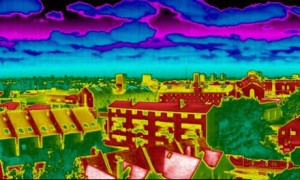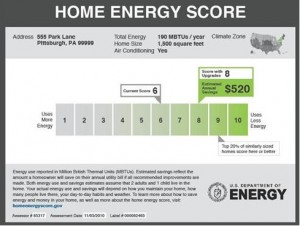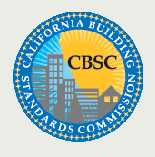Posts Tagged Green Building
Building Energy Analysis : A smorgasbord
Posted by Jim Foster in As Builts, Autodesk, BIM, Energy Analysis, Energy Modeling on April 11, 2012
 This is the case the more I learn about it, the less I know. As energy analysis picks up as a real tool in the trades, not just for sustainable retrofits, but to provide the data for financing as well and people working it from combing demographic information with utilities, to engineers, and beyond the amount of tools out there starts to become staggering…and I am sure I will be missing plenty. But half of this excercise is to get input from anyone reading this to what they are using and why. And am encouraging smack talk to why one is better than another. What follows is a completely non-exhaustive list of stuff I’ve been running into and in no particular order. For a more exhaustive list without editorial comments the DOE (Department of Energy) maintains this List.
This is the case the more I learn about it, the less I know. As energy analysis picks up as a real tool in the trades, not just for sustainable retrofits, but to provide the data for financing as well and people working it from combing demographic information with utilities, to engineers, and beyond the amount of tools out there starts to become staggering…and I am sure I will be missing plenty. But half of this excercise is to get input from anyone reading this to what they are using and why. And am encouraging smack talk to why one is better than another. What follows is a completely non-exhaustive list of stuff I’ve been running into and in no particular order. For a more exhaustive list without editorial comments the DOE (Department of Energy) maintains this List.
- EQuest – Straight out of the DOE, and while their website looks like it was designed in 1998, the claim is “Imagine a building energy simulation tool comprehensive enough to be useful to ALL design team members, yet so intuitive ANY design team member could use it” And I know people out there using it.
- BEopt – Straight out of NREL (National Renewable Energy Laboratory) – Now this seems to have some limitations and uses the DOE 2.2 engine, just as eQuest does however, one thing that popped out is the fact that you cannot call out different wall types or change sill heights to windows, which seems very limiting, yet, people are out there using it.
- EnergyPlus : ” is a whole building energy simulation program that engineers, architects, and researchers use to model energy and water use in buildings”
- The Autodesk Family
- Green Building Studio – This a web based service that allows for a variety of analysis including:
- Whole Building Energy Analysis
- Carbon Emissions : Footprint
- Weather Analysis
- Design Alternatives
- Water Usage
- Energy Star Scoring
- GBS uses gbXML and is interoperable with Revit and….yes the DOE 2.2 Engine.
- Ecotect : How this is different than GBS, I don’t know, but if you buy Ecotect you get GBS along with it..but both have similar claims.
- Vasari : More energy analysis but at the design concept stage
- Google : Sketch Up Family
- IES Plug In – Allows you to apply materials onto a Sketch Up model for import into an IES tool
- Energy Plus Open Studio Plug In – All the EnergyPlus option through your SketchUp model
- GreenSpace Modeler : Allows you to apply gbmxl textures to a sketchup model for import into a gbmxl tool for analysis like Green Building Studio
An excellent resource I found through WBDG is the a summary of Energy Analysis Tools, including DOE 2.2, BLAST, EnergyPlus, and the like. Plus there is a whole list of BLCCs (Building Lifecycle Cost) Programs.
I guess the point is just when you think BIM is going to solve everything with a push button, no matter which ecosphere you live in, be it Autodesk, Archicad, etc. there are tool sets out there, and more importantly ‘free’ tool sets out there that get a lot of play. What worksflows and tools are you using for building / energy analysis?
Obama Administration Boosts Retrofits : Biden Announces Fed Program
Posted by Jim Foster in BIM, Built Environment, Sustainable Retrofits on November 12, 2010
 Am I calling it or what? As reported by Martin LaMonica on CNET and the Steven Thomma of the Miami Herald Vice President Joe Biden with US Department of Energy Secretary Steven Chu on Tuesday unveiled a new federal program to make it easier for Americans to make their homes more energy efficient, saying it will help people save money and create new jobs for contractors.
Am I calling it or what? As reported by Martin LaMonica on CNET and the Steven Thomma of the Miami Herald Vice President Joe Biden with US Department of Energy Secretary Steven Chu on Tuesday unveiled a new federal program to make it easier for Americans to make their homes more energy efficient, saying it will help people save money and create new jobs for contractors.Excerpts for the release below:
“The initiatives announced today are putting the Recovery Through Retrofit report’s recommendations into action – giving American families the tools they need to invest in home energy upgrades.” said Vice President Biden. “Together, these programs will grow the home retrofit industry and help middle class families save money and energy.”
“The Home Energy Score will help make energy efficiency easy and accessible to America’s families by providing them with straightforward and reliable information about their homes’ energy performance and specific, cost-effective energy efficiency improvements that will save them money on their monthly energy bills,” said Secretary Chu.
Under this voluntary program, trained and certified contractors will use a standardized assessment tool developed by DOE and Lawrence Berkeley National Laboratory to quickly evaluate a home and generate useful, actionable information for homeowners or prospective homebuyers. With only about 40 inputs required, the Home Energy Scoring Tool lets a contractor evaluate a home’s energy assets, like its heating and cooling systems, insulation levels and more, in generally less than an hour. That means a homeowner can see how their home’s systems score, regardless of whether a particular homeowner takes long or short showers or keeps their thermostat set high or low.
The following states and municipalities are participating in the pilot program: Charlottesville, Virginia; Allegheny County, Pennsylvania; Cape Cod and Martha’s Vineyard, Massachusetts; Minnesota; Omaha and Lincoln, Nebraska; Indiana; Portland, Oregon; South Carolina; Texas; and Eagle County, Colorado. Learn more about each of the testing locations along with details on how to participate in the Home Energy Score program.
Consumers can apply for up to $25,000 in PowerSaver loans through the U.S. Department of Housing and Urban Development, which expects that 24,000 homes will qualify during a two-year pilot program, according to USA Today.
This home energy retrofit program follows a $5 billion weatherization investment that was part of the stimulus package last year. Another effort is Home Star, nicknamed Cash for Caulkers, which would provide rebates to consumers for investing in energy efficiency retrofits.
Read more: http://news.cnet.com/8301-11128_3-20022184-54.html#ixzz155UA7FTa
How does this effect BIM users/developers, etc.?
Commercial deployment will be huge and has more robust documentation and reporting needs, plus these firms getting into it will need to have better tools, etc as the race begins to fill these needs and to differentiate themselves from competition, imagine a 3D BIM model with all the reporting built into it. I have to imagine the plug ins are already under development. Additionally, did you notice the certification needs recommended for this. Strap it on, let’s get back to work.
CALGreen is Coming : More Markets for Energy Analysis : Green Building : #BIM
Posted by Jim Foster in BIM, Green, Sustainable Retrofits on July 13, 2010
 Signed in 2004, mandatory in 2011 Executive Order S-20-04 set in motion a whole new set of building codes to reduce energy purchases by 20% by 2015. I included section 1 and 2 in their entirety below.
Signed in 2004, mandatory in 2011 Executive Order S-20-04 set in motion a whole new set of building codes to reduce energy purchases by 20% by 2015. I included section 1 and 2 in their entirety below.
1. That the state commit to aggressive action to reduce state building electricity usage by retrofitting, building and operating the most energy and resource efficient buildings by taking all cost-effective measures described in the Green Building Action Plan for facilities owned, funded or leased by the state and to encourage cities, counties and schools to do the same.
2. That state agencies, departments, and other entities under the direct executive authority of the Governor cooperate in taking measures to reduce grid-based energy purchases for state-owned buildings by 20% by 2015, through cost-effective efficiency measures and distributed generation technologies; these measures should include but not be limited to: 2.1. Designing, constructing and operating all new and renovated state-owned facilities paid for with state funds as “LEED Silver” or higher certified buildings; and 2.2. Identifying the most appropriate financing and project delivery mechanisms to achieve these goals; and 2.3. Seeking out office space leases in buildings with a U.S. EPA Energy Star rating; and 2.4. Purchasing or operating Energy Star electrical equipment whenever cost-effective.
Not only that, within the Executive Order their is a provision for CALPERS (the California Pension plan and huge investor) are ‘requested to target resource efficient buildings for real estate investments and commit clean technology funds to advanced sustainable and efficiency technologies.’
You can jump the new building codes home page here. With the GSA requiring a BIM on all new building and major renovations and now California requiring Green Building Practices in all their public buildings the increase in new technologies related to building will continue to grow. To completely beat the dead horse into submission, not that a dead horse needs to be beat any more, metaphorically speaking, but…sustainable retrofits, say it again…
Autodesk : Solar Radiation : Revit 2011 Preview
Posted by Jim Foster in Green, Revit on May 25, 2010
It looks like Autodesk continues to integrate technology from their Ecotect purchase into their products. Solar Radiation studies are now available through Revit 2011. It is available through Autodesk Labs and is limited release for preview and feedback. Visit the Autodesk Labs site to sign up. Or view below.

